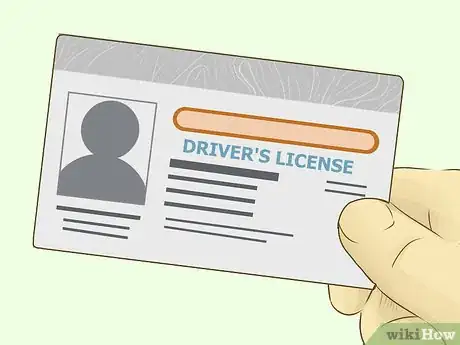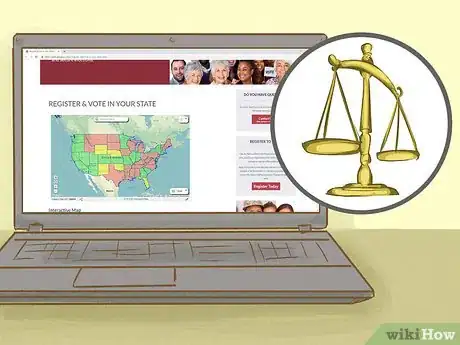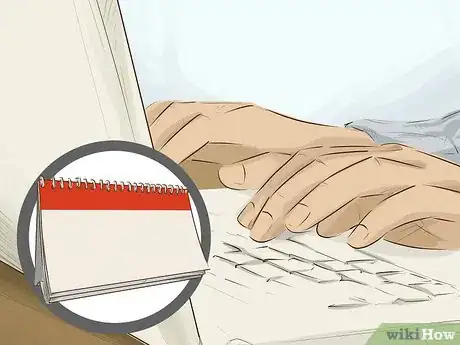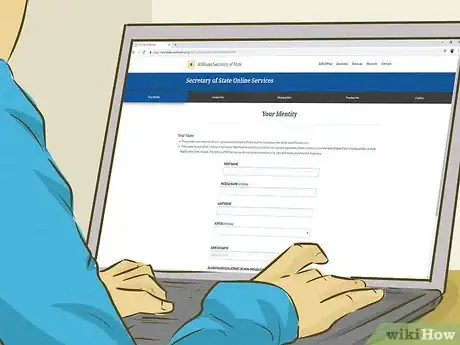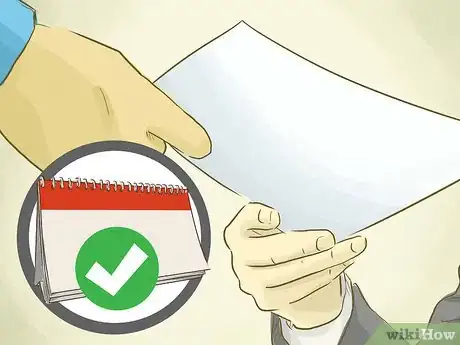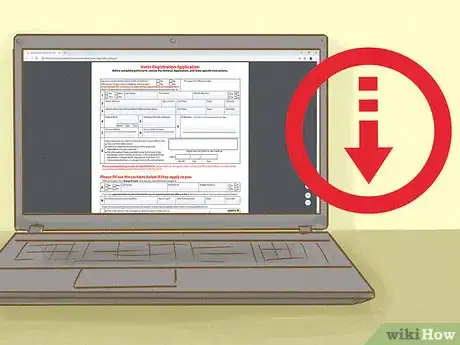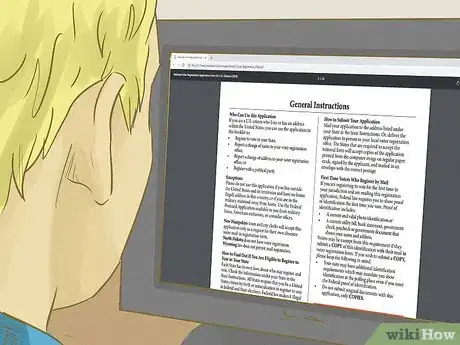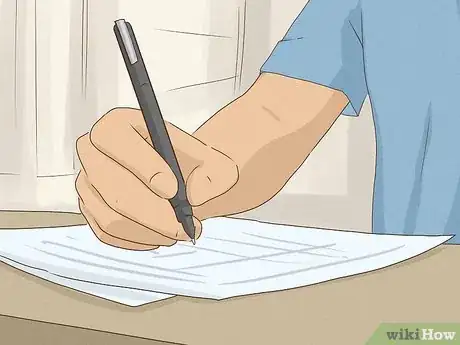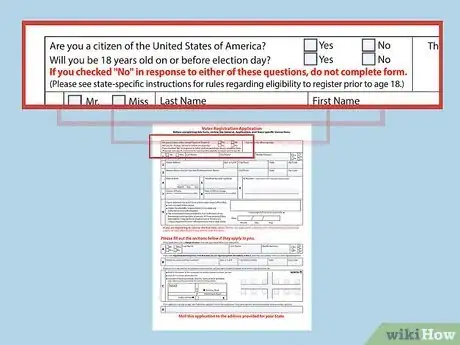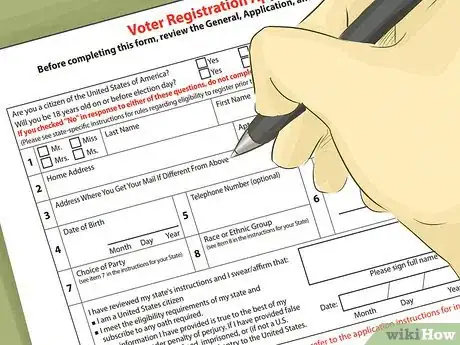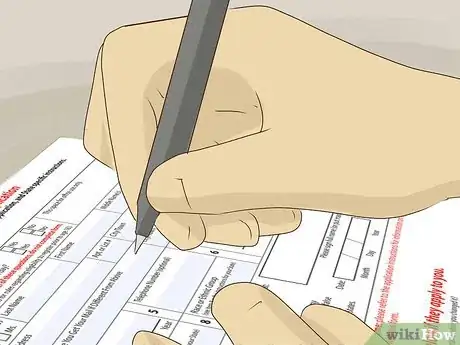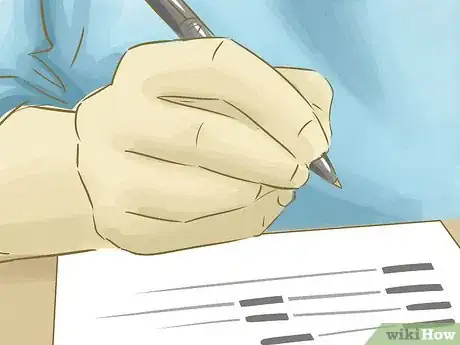This article was co-authored by Vote.org. Vote.org is a 501(c)(3) nonprofit that uses technology to simplify political engagement, increase voter turnout, and strengthen American democracy. In particular, it aims to reach underserved voters, and has established itself as one of the most trusted and acessible online resources for registering to vote and understanding how to cast your ballot.
This article has been viewed 37,385 times.
In a democracy, voting is the best way to make sure your voice is heard in your country. If you're eligible, it's part of your civic duty to vote on Election Day. Every state in the US except for North Dakota requires you to register before voting, a fairly simple process that requires some basic information. Remember to get your registration in early to ensure that you get your say on Election Day!
Warning: Many states are changing their voting and election rules in response to COVID-19. You can check if your state’s rules have changed here: https://www.vote.org/covid-19/.
Steps
Determining Voting Eligibility
-
1Follow the registration guidelines for the state you live and will vote in. Every state in the US has the power to choose their own voting requirements and process for registering new voters.[1] You should register to vote in the state of your primary residence.
- If you move, you may switch which state you vote in, but you'll need to re-register to vote in your new state of primary residence. However, it's illegal to vote in two states for the same election.
- In order to vote in a state, you may be asked to provide proof of residency, such as a state ID, utility bill, or lease agreement.
-
2Confirm you're eligible to vote based on your age and citizenship status. In all states, you must be at least 18 years old on Election Day and must be a U.S. citizen.
- Federal law requires you to show proof of identification the first time you vote. You may be exempt from this requirement if you submit a copy of your ID when you mail in your voter registration form. If you are a first-time voter or live in a state that requires you to show an ID order to vote, you may need to bring additional identification to vote, even if you submit photocopies that meet federal requirements with your application. Check your state's Voter ID requirements at https://www.vote.org/voter-id-laws/.
- If you are under the age of 18, you may be able to pre-register to vote if your state allows it. If you aren't yet 18 and your state does not have pre-registration, sign up at https://www.vote.org/pledge-to-register to receive a text reminder on your 18th birthday and a link to register to vote.
Advertisement -
3Check your state's additional eligibility laws. Some states have additional requirements to be eligible to vote, such as living in the county you'll vote in for at least 30 days or not having been convicted of a felony. You can find your state's full eligibility requirements here: https://www.vote.org/voter-registration-rules/.
-
4Note your state's registration deadline. In every state, you must submit your registration paperwork before the next election.
- You can find your state’s registration deadline here: https://www.vote.org/voter-registration-deadlines/.
- Unless you move or change your name, you don't need to re-register to vote for every election once you're registered. However, it's a good idea to confirm your registration before each election at https://www.vote.org/am-i-registered-to-vote/ to make sure nothing has changed.
Registering Online
-
1Check if your state offers online registration. As of September 2020, 40 states allow you to register to vote online. If you live in a state with online registration, you can conveniently fill out the electronic form. However, you will need to register in person or by mail if your state doesn’t have online registration.[2]
- You can find a list of states that offer online registration and links to each registration site, here: https://www.ncsl.org/research/elections-and-campaigns/electronic-or-online-voter-registration.aspx#Table%20of%20states%20w/ovr.
- The states that do not allow online registration are Arkansas, Maine, Mississippi, Montana, New Hampshire, North Carolina, South Dakota, Texas, and Wyoming, plus the District of Columbia.
-
2Find the online application form to register to vote in your state. Each state has their own registration process. You can find your state's form at your State election office website, or you can use websites like https://vote.gov/ or https://www.vote.org/register-to-vote/ to start filling out a general application before being redirected to your state election website.[3]
- In most states, you can fill out the same application form if you need to update your personal information, such as changing your name, address, or party affiliation.
-
3Fill out your personal information in the form. You will need to list your full name, address, and date of birth in the form. If you have a different mailing address, be sure to provide it in the appropriate box. You may also see boxes for your email address and phone number, but they may be optional.[4]
-
4Provide a state-issued ID to confirm your identity, if needed. Your state may require a valid driver’s license, state-issued ID, Social Security number, or other identification. Your ID number usually is the number listed on the top of your driver's license or other state-approved ID. Type in the numbers exactly as they appear.[5]
- Some states allow you to register online even if you don't have a state-issued ID.
- If you don't have a state ID or social security number, you're still allowed to register to vote using the paper registration form. You may need to bring an ID and additional proof of residency, such as a pay stub or current utility bill, when you vote. Check your state's Voter ID requirements at https://www.vote.org/voter-id-laws/.
- Federal law requires you to show proof of identification the first time you vote.
-
5Select your preferred political party if your state requires you to do so. Look for the section of the form that asks you to choose a political party and read the instructions to find out if you need to choose one. You can select the party you affiliate with the most, or if your state allows it and you would like to skip this step, you may choose the option for "No Party."
- Some parties you can select may include Republican, Democratic, Libertarian, or Independent.
- Some states require you to choose a political party in order to be allowed to vote in primaries, caucuses, or conventions.
-
6Look over your information and make sure you spelled everything correctly. Check every box to make sure you've entered your information correctly. Then, double-check that you've completed all the required boxes. Fix any errors that you find.[6]
- If you have any questions about filling in the online form, most states offer a help hotline you can call.
-
7Submit your application before the registration deadline. Some states require you to register as many as 30 days before the election, so make sure you’re meeting the deadline for your state.[7] The deadline to register online will be posted on your state's registration site, and you can also find it by visiting https://www.vote.org/voter-registration-deadlines/.
- Submitting your online registration form does not automatically register you to vote, and your state will still need to review your form. Processing time varies by state, but it may take a few days for your registration to be accepted.
- You can check your voter registration on your State Election Office's website.
Registering by Mail
-
1Download the National Mail Voter Registration Form. This form can be used in most states to register to vote by submitting your application in the mail. The form can be found at https://www.eac.gov/sites/default/files/eac_assets/1/6/Federal_Voter_Registration_ENG.pdf. It is available in English, Spanish, Chinese, Korean, Japanese, Tagalog, and Vietnamese. Download and print the form so you can fill it out.
- Currently, this form is not accepted in Wyoming, American Samoa, Guam, Puerto Rico, and the U.S. Virgin Islands. To learn more about voter registration in these places, visit your State Election Office site or Overseas Vote Foundation at https://www.overseasvotefoundation.org/vote/home.htm.[8]
- If you live in New Hampshire, you can only use this form to request an absentee ballot.
- North Dakota does not have voter registration.
-
2Read the federal and state instructions on the form. Read the general instructions and application instructions at the beginning of the form. Then, go to the back of the application to find and read your state-by-state instructions as well.
- You can also refer to your state's election website to get information and forms.
-
3Fill out the form with your accurate information. Never lie, skip required information, or use nicknames on your voting form since it may result in your application being delayed or denied. Use black or blue ink to fill out the application.
-
4Check the boxes at the top of the application to confirm your eligibility. Find the boxes at the top of the form that verify your eligibility to vote. Put an “X” or checkmark in the appropriate boxes showing you’re eligible.
-
5Provide your personal information in the boxes provided. Follow the instructions for each box, writing your full legal name, current address, and date of birth. You may also enter your phone number but aren’t required to do so.
-
6Follow your state’s instructions for boxes 6, 7, and 8. Look for your state in the back pages of the application so you know what form of identification you need to provide in Box 6, and follow these instructions accordingly. Then, check your state’s instructions in the back pages of the application to see if you need to choose a political party, and fill out Box 7 based on those instructions. Follow the same process for Box 8, looking up your state instructions and providing the information as needed.
- If you don’t have an ID or Social Security number, check your state-specific requirements. For example, they may have you leave it blank or write “NONE.” You may get assigned a unique voter ID by your state when they process the application.
-
7Sign and date the bottom of the form. Verify that everything you’ve entered on your form is correct. Then, sign the form to confirm it’s accurate. Make sure to fill out Sections A, B, and C at the bottom of the form if they apply to you.
-
8(Optional) Include a copy of your identification. If you are registering to vote for the first time and are mailing this registration application, Federal law requires you to show proof of identification the first time you vote. You may be exempt from this requirement if you submit a copy of your ID when you mail in your voter registration form. If you’d like to submit a copy with your voter registration application, make a photocopy of your current and valid ID, such as a passport or driver's license, and of other documentation that shows your name and address like your utility bill, bank statement, or paystub, based on your state-specific instructions. Put the copies in an envelope with your form.
- If you are a first-time voter or live in a state that requires you to show an ID in order to vote, you may need to bring additional identification to vote, even if you submit photocopies that meet the federal requirements with your application. Check your state’s Voter ID requirements at https://www.vote.org/voter-id-laws/.
-
9Send your application to the election office listed for your state. Check the end of the application’s state-specific instructions to find the address for your election office. Put your registration in the mail before the listed deadline for the election you want to participate in. Make sure you have written the mailing address correctly and add a stamp for postage.
- Deadlines are usually between 7–30 days before the scheduled election, but they will vary state by state. Some states have “postmarked by” deadlines and others have “received by” deadlines, so make sure you know the rules for your state and leave yourself extra time in case there are unexpected delays. Check your state’s deadlines in the state-specific instructions after the application or at https://www.vote.org/voter-registration-deadlines/.
- Your state may send you a voter registration card in the mail to confirm your application was processed successfully.
Registering in Person
-
1Find a location in your area where you can register. Registering to vote in person can be an easier option for some people. Locate your nearest local or state election office, which is usually in a municipal building or town hall. You may also be able to register at a Department of Motor Vehicles (DMV), Armed Forces recruitment center, or a public assistance office.
- You may also find National Voter Registration Forms at other government buildings, such as libraries and post offices.
- You can find your state’s election office here: https://www.usvotefoundation.org/vote/eoddomestic.htm.
Warning: Many states are changing their voting and election rules in response to COVID-19. You can check if your state’s rules have changed here: https://www.vote.org/covid-19/.
-
2Check your state's registration eligibility requirements. To vote in any state, you must be a U.S. citizen, a resident of the state where you’re registering, and at least 18 years old by Election Day. Your state may have different eligibility requirements for registering, so check online to make sure you’re able to register. Make sure you register before the deadline posted for the election date, or you may not be eligible to vote in it.
- You can check your voter eligibility requirements here: https://www.vote.org/voter-registration-rules/.
- You can check your state’s in-person registration deadline at https://www.vote.org/voter-registration-deadlines/.
-
3Bring the appropriate documents. Your state may require specific documents like a valid state-issued ID, Social Security Number, or other documents to verify your identity. Check your state’s specific instructions for what documents you need to bring with you while you’re registering at https://www.vote.org/voter-id-laws/. Your state may also require additional proof of residency like a utility bill or paystub.
- You are allowed to bring your registration form home and return it at a later date if you forget something.
-
4Fill out the application form with your personal information. Read the instructions for the form carefully so you fill it in correctly, including the state-specific instructions that follow the application. Write in your full legal name, address, and date of birth in the appropriate boxes. Check your state-specific instructions to see your ID requirements and if you need to provide a party affiliation or information about your race or ethnicity. Sign and date the bottom of the form when you’re finished.
- If you have any problems filling out the form, ask the official at the election office for assistance.
-
5Register to vote before the election. The deadline for in-person registration may be later than online or mail-in applications, but it will vary from state to state. Try to register as early as possible in case there are issues with your paperwork. Registering in-person is quick and easy, so get it done sooner rather than later.
- In-person voter registration locations may get crowded as Election Day gets closer. Give yourself plenty of time to make sure your voice gets heard.
- Some states have Election Day registration where you can register and vote on the same day. Check if your state offers same-day registration here: https://www.vote.org/voter-registration-deadlines/
References
- ↑ https://www.vote.org/voter-registration-rules/
- ↑ http://www.ncsl.org/research/elections-and-campaigns/electronic-or-online-voter-registration.aspx#Table%20of%20states%20w/ovr
- ↑ http://www.ncsl.org/research/elections-and-campaigns/electronic-or-online-voter-registration.aspx#Table%20of%20states%20w/ovr
- ↑ https://www.usa.gov/register-to-vote
- ↑ http://www.ncsl.org/research/elections-and-campaigns/electronic-or-online-voter-registration.aspx#Table%20of%20states%20w/ovr
- ↑ https://www.usa.gov/register-to-vote
- ↑ http://www.ncsl.org/research/elections-and-campaigns/electronic-or-online-voter-registration.aspx#Table%20of%20states%20w/ovr
- ↑ https://www.eac.gov/voters/national-voter-registration-act#Who-can-use-the-National-Form?
About This Article
Registering to vote in most U.S. states is a quick and easy process. To be eligible to vote, you must be a U.S. citizen, and at least 18 years old by election day. If you are under the age of 18, you may be able to pre-register to vote if allowed by your state’s laws. If you are a first-time voter, you will need to provide proof of identity when registering such as a driver’s license, state ID, or passport. You may also need to provide additional proof of residence such as a current utility bill or bank statement. Check your State Election Office website for a list of acceptable documents. Note that there may be additional eligibility requirements for your state. For example, some states may not allow those with former felony convictions to vote. You can learn more about your state's requirements by visiting your State Election Office website. If you meet your state’s requirements, you’re ready to register. There are three ways you can submit your registration: in person, by mail, or online. You can register to vote in person at your local or state election office, or at the DMV if your state has what is known as a “motor voter law.” You can register by mail by using a National Mail Voter Registration Form or via your state’s voter registration form. If you don't have access to a computer, you can pick up a registration form at many government offices, such as the Post Office, your local DMV, or a public library. In several states, you can also register to vote online. Currently, 39 states plus the District of Columbia offer online registration. If you plan on voting in an upcoming election, make sure to register to vote before your state’s deadline. You can find your state’s voter registration deadline, as well as same-day registration details on your State Election Office website or a nonprofit, nonpartisan website like Vote.org. The earliest state deadline for the 2020 presidential election is October 3, 2020. If you miss the registration deadline, your state may offer same-day registration in-person during early voting as well as at polling centers on Election Day. To learn how to register in-person and see if you're eligible to vote, read on!

